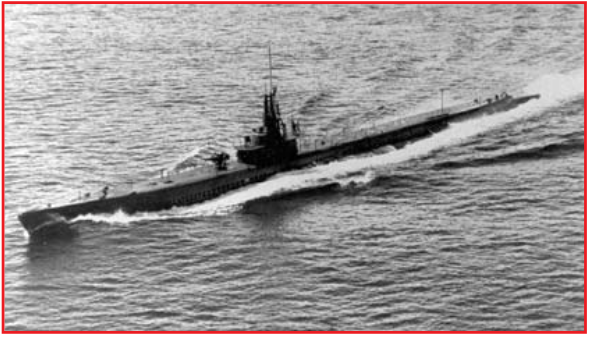
On Memorial Day, people sometimes thank veterans, rather than remembering those that died defending the United States. Surviving Veterans have our own day, 11 November. Today, we should remember those that gave the ultimate sacrifice. As we do so, let us not just think about our most recent conflicts. Before it recedes into history, let us remember comrades of our parents and grandparents, who gave their lives during WWII, which ended over 70 years ago.
The US Submarine Service took the highest percent of casualties of any US service during that war–nearly 23%. Submariners represented only 1.6% of Navy personnel, but were responsible for over 55% of Japanese ships sunk. My father, James Brink, was a submariner. He survived four war patrols on the USS Sea Poacher (SS-406) and went on to raise a family and have a successful career. Over 3,500 of his fellow submariners did not. In all, 52 American submarines were lost during WWII.
Below is a list of US submarines lost during WWII. Casualty lists for each submarine can be found at the San Francisco Maritime National Park Association.
1941
USS SEALION (SS-195)
1942
USS S-36 (SS-141), USS S-26 (SS-131), USS SHARK (SS-174), USS PERCH (SS-176), USS S-27 (SS-132), USS S-39 (SS-144), USS GRUNION (SS-216)
1943
USS ARGONAUT (SS-166), USS AMBERJACK (SS-219), USS GRAMPUS (SS-207), USS TRITON (SS-201), USS PICKEREL (SS-177), USS GRENADIER (SS-210), USS RUNNER (SS-275), USS R-12 (SS-89), USS GRAYLING (SS-209), USS POMPANO (SS-181), USS CISCO (SS-290), USS S-44 (SS-155), USS DORADO (SS-248), USS WAHOO (SS-238), USS CORVINA (SS-226), USS SCULPIN (SS-191), USS CAPELIN (SS-289)
1944
USS SCORPION (SS-278), USS GRAYBACK (SS-208), USS TROUT (SS-202), USS TULIBEE (SS-284), USS GUDGEON (SS-211), USS HERRING (SS-233), USS GOLET (SS-361), USS S-28 (SS-133), USS ROBALO (SS-273), USS FLIER (SS-250), USS HARDER (SS-257), USS SEAWOLF (SS-197), USS SHARK II (SS-314), USS TANG (SS-306), USS ESCOLAR (SS-294), USS ALBACORE (SS-218), USS GROWLER (SS-215), USS DARTER (SS-227), USS SCAMP (SS-277)
1945
USS SWORDFISH (SS-193), USS BARBEL (SS-316), USS KETE (SS-369), USS TRIGGER (SS-237), USS SNOOK (SS-279), USS LAGARTO (SS-371), USS BONEFISH (SS-223), USS BULLHEAD (SS-332)
ADDITIONAL WW II SUBMARINE PERSONNEL LOSSES ARE ALSO ON THE SITE








